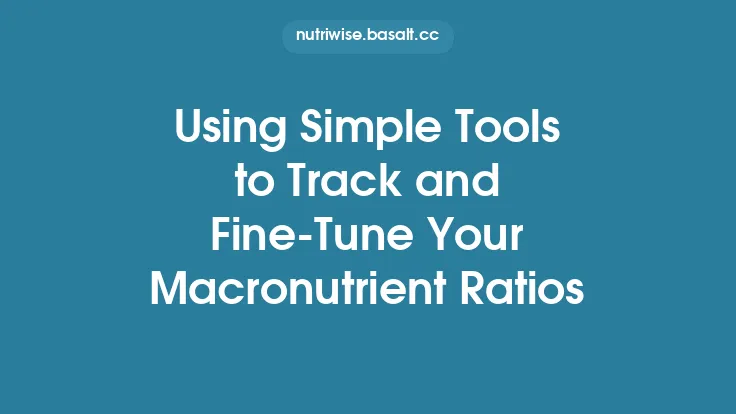In many households, food waste silently erodes both the budget and the planet. While the problem often feels overwhelming, a series of small, intentional habits can dramatically reduce the amount of edible material that ends up in the trash. Below are ten practical, easy‑to‑implement strategies that focus on how you handle, prepare, and preserve food inside your kitchen. By integrating these methods into your daily routine, you’ll keep more food on the plate, extend the life of ingredients, and contribute to a more sustainable food system.
1. Adopt a “First‑In, First‑Out” (FIFO) System
Every time you bring groceries home, place the newest items behind the older ones. This simple visual cue ensures that older products are used before they have a chance to spoil. To make FIFO truly effective:
- Create a dedicated “staging” shelf near the fridge door where newly purchased items sit for a quick visual check.
- Rotate containers weekly, moving the ones at the back to the front.
- Use clear storage bins so you can see exactly what’s inside without opening each package.
By consistently applying FIFO, you eliminate the hidden waste that accumulates when older items are forgotten behind newer ones.
2. Keep a Real‑Time Inventory List
A handwritten note on the fridge door or a digital spreadsheet on your phone can serve as a living inventory of what you have. Include:
- Item name
- Quantity
- Purchase or opening date
- Estimated “best‑by” window (based on your own observations, not official dates)
When you glance at the list before shopping or cooking, you’ll instantly see which ingredients need to be used soon, preventing accidental over‑purchasing and reducing the chance of items expiring unnoticed.
3. Master Proper Portioning Before Cooking
Even though portion control is a separate topic, the act of measuring ingredients before you start cooking can dramatically cut waste. Use kitchen scales or measuring cups to:
- Determine exact amounts needed for a recipe.
- Adjust recipes to match the number of servings you actually intend to serve.
- Reserve excess in airtight containers for later use, rather than letting it sit exposed and spoil.
Accurate portioning also means you won’t have large leftovers that sit idle for days, increasing the likelihood they’ll be repurposed promptly.
4. Embrace Freezer‑Friendly Preparation
Freezing is one of the most reliable ways to extend the life of perishable foods without compromising nutritional value. To make the most of your freezer:
- Pre‑portion items into meal‑size bags or containers, labeling each with the content and date.
- Blanch vegetables (briefly boil then shock in ice water) before freezing to preserve color, texture, and nutrients.
- Freeze herbs in ice‑cube trays with a little water or oil, creating ready‑to‑use flavor packets.
By turning fresh produce into freezer‑ready portions, you create a buffer that can be tapped whenever a recipe calls for that ingredient, eliminating the need to buy fresh each time.
5. Use Whole Ingredients, Not Just the “Prime” Parts
Many parts of fruits, vegetables, and proteins are often discarded despite being perfectly edible and nutritious. Incorporate these components into your cooking routine:
- Peel‑on skins (e.g., carrot tops, beet greens) into sautés or salads.
- Core and stem portions of broccoli, cauliflower, or kale can be roasted alongside florets.
- Fish bones and skin can be crisped in a pan for a crunchy garnish.
By expanding your definition of “usable,” you automatically increase the yield from each ingredient, reducing the volume of waste generated.
6. Implement a “One‑Day‑Later” Check
Before you start cooking, glance at the items that are a day or two away from their optimal use window. Prioritize recipes that incorporate those ingredients. This habit can be reinforced by:
- Setting a daily reminder on your phone to review the inventory.
- Keeping a “use‑first” basket on the counter where you place items that need immediate attention.
A quick visual cue each morning can steer your meal decisions toward the foods that would otherwise be at risk of spoiling.
7. Optimize Storage Containers and Seals
Even the best‑kept food can deteriorate quickly if stored in inappropriate containers. Follow these guidelines:
- Use airtight glass jars for dry goods like grains, nuts, and seeds to keep moisture out.
- Select containers with vented lids for produce that releases ethylene (e.g., apples) to slow ripening.
- Invest in silicone stretch lids that conform to various bowl shapes, reducing the need for plastic wrap.
Proper containers not only extend shelf life but also make it easier to see what’s inside, supporting the FIFO and inventory practices described earlier.
8. Leverage Technology for Waste Tracking
Several apps and smart kitchen devices can help you monitor food usage and flag items approaching spoilage:
- Barcode scanning apps let you log purchase dates instantly.
- Smart fridge sensors can alert you when temperature fluctuations threaten food quality.
- Meal‑suggestion platforms can generate recipe ideas based on the ingredients you have on hand.
By integrating technology, you gain data‑driven insights that make waste reduction more precise and less reliant on memory.
9. Conduct Regular “Pantry Audits”
Set aside a 15‑minute slot each week to walk through your pantry, fridge, and freezer. During the audit:
- Remove any items with visible mold, off‑odors, or severe discoloration—these are beyond salvage.
- Group similar items together (e.g., all canned beans) to quickly assess quantities.
- Re‑label any containers that have lost their original markings, noting the date you opened them.
A systematic audit prevents forgotten items from slipping into the trash and reinforces the habit of conscious consumption.
10. Educate Household Members and Share Responsibility
Finally, waste reduction thrives when everyone in the home participates. Hold a brief family meeting to:
- Explain the FIFO and inventory systems so each person knows where to place new groceries.
- Assign rotating “food steward” duties, such as checking the freezer for items nearing their use‑by window or updating the inventory list.
- Celebrate small wins, like a week with zero food waste, to keep motivation high.
When the entire household understands the why and how of each strategy, the collective effort yields far greater results than isolated actions.
By weaving these ten strategies into the rhythm of your daily kitchen life, you’ll see a noticeable decline in the amount of food that ends up discarded. The benefits extend beyond the obvious cost savings; you’ll also be contributing to a more sustainable food system, reducing greenhouse‑gas emissions associated with production and disposal, and fostering a culture of mindful consumption in your home. Start with one or two tactics, refine them, and gradually incorporate the rest—your kitchen, wallet, and the planet will thank you.





